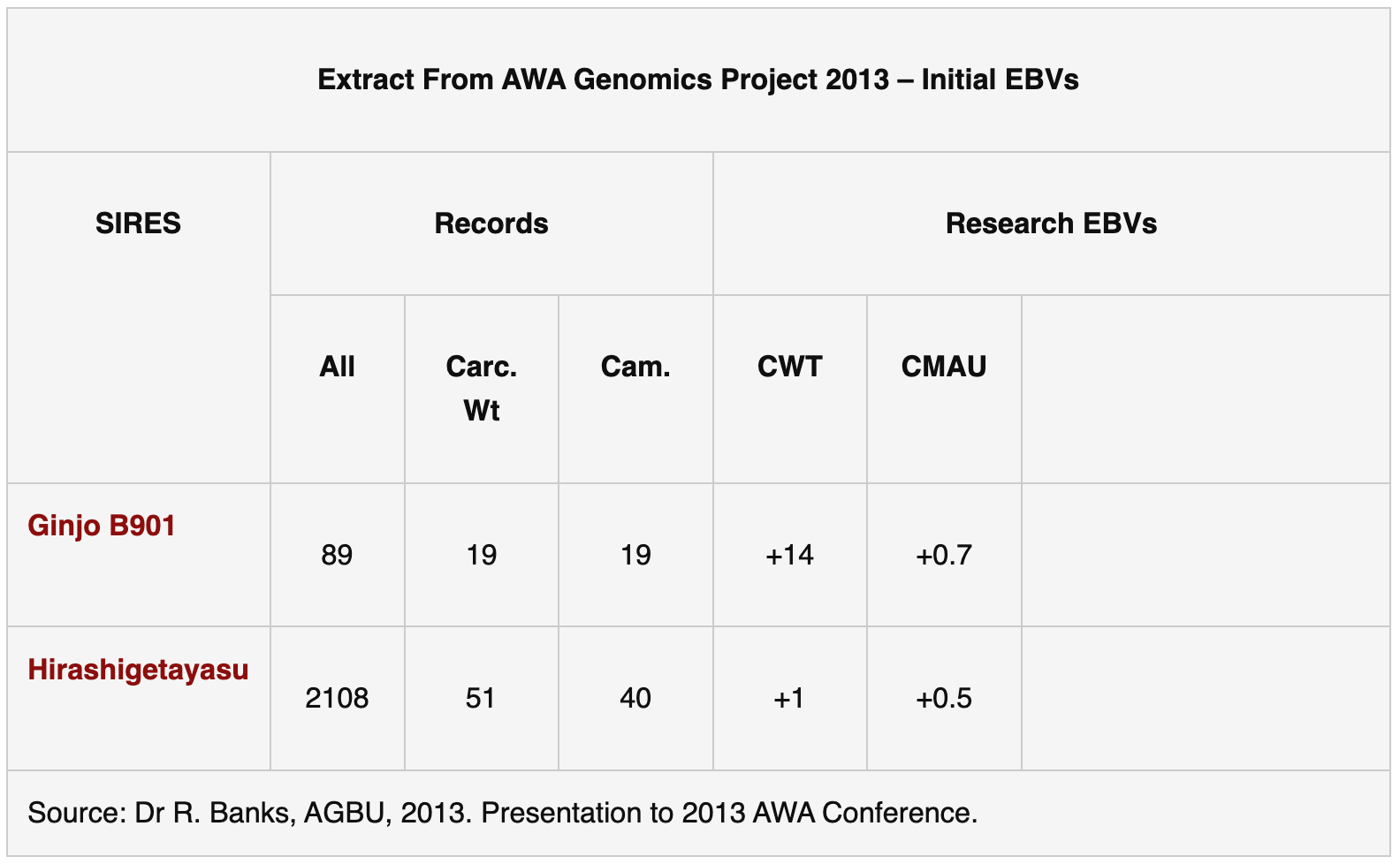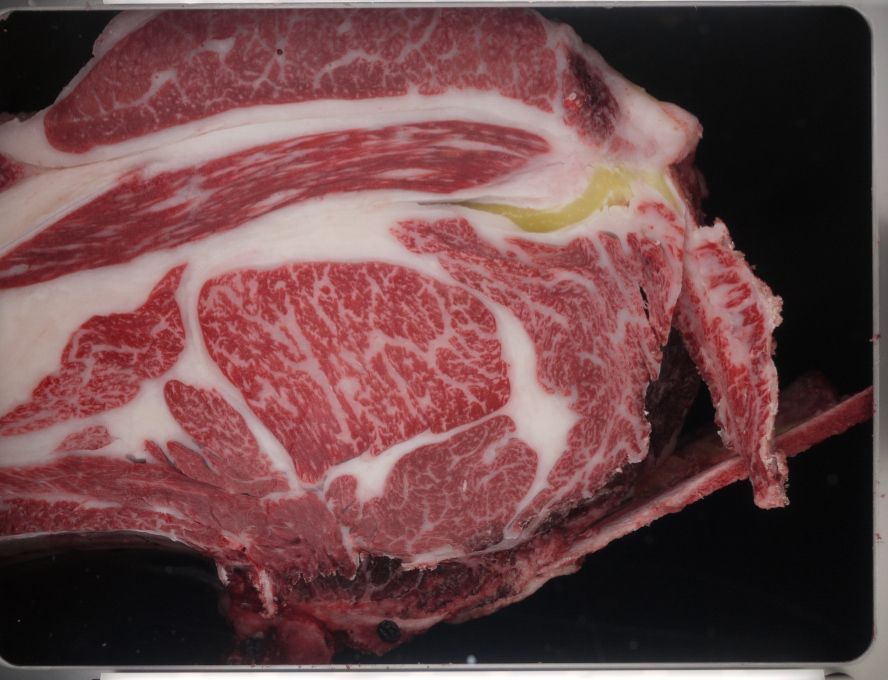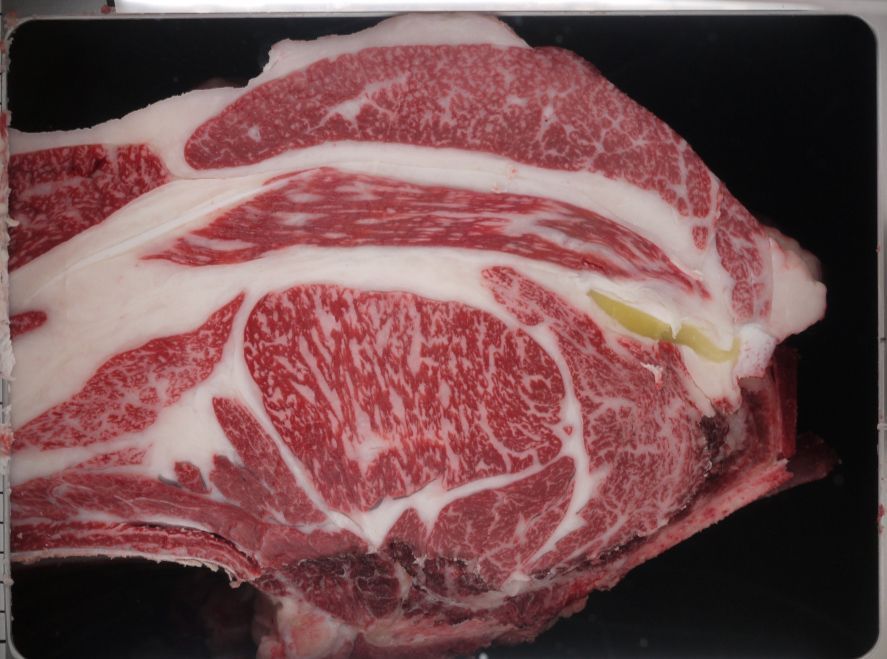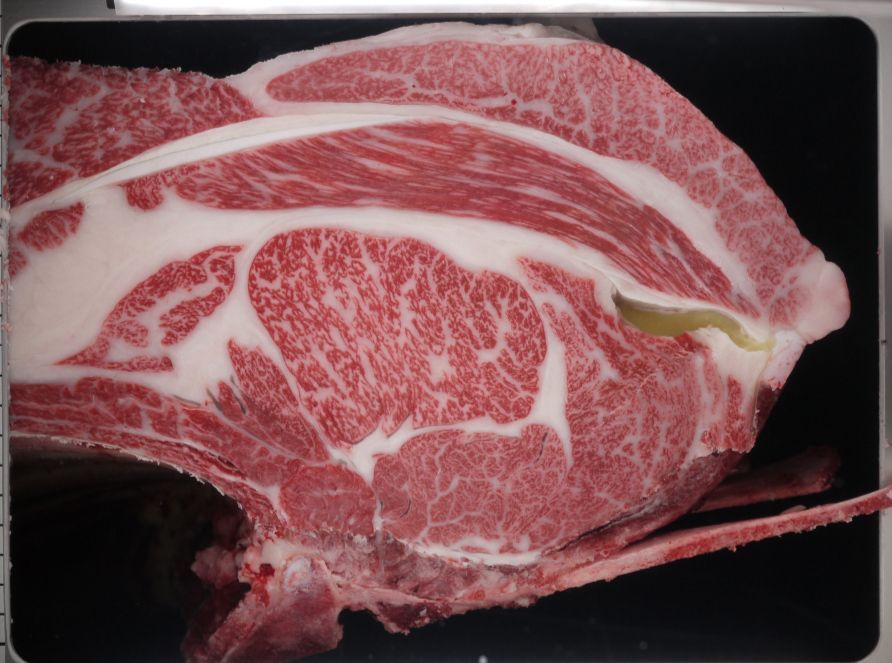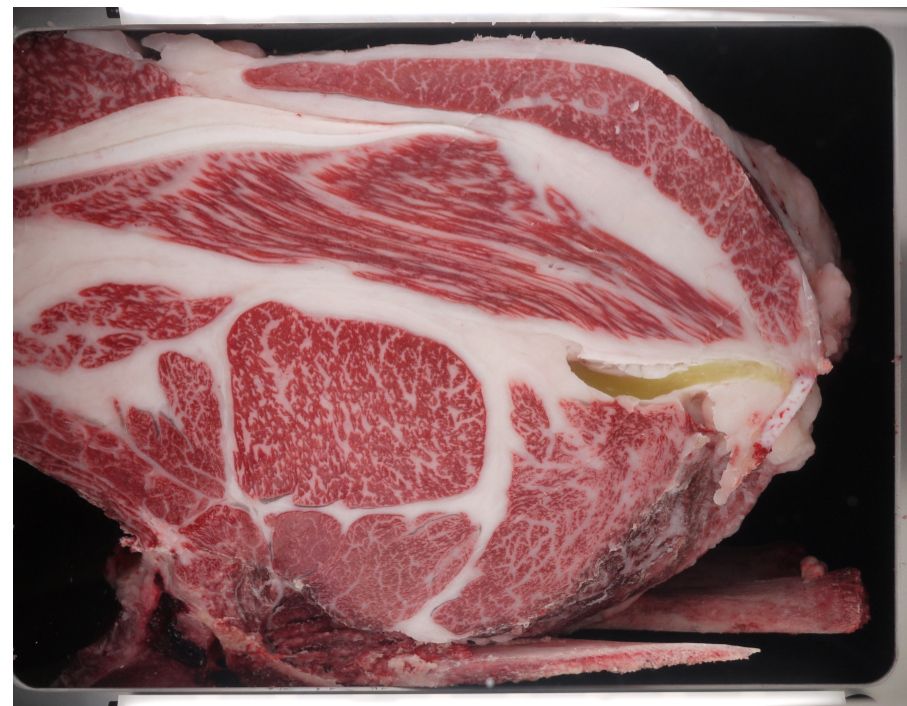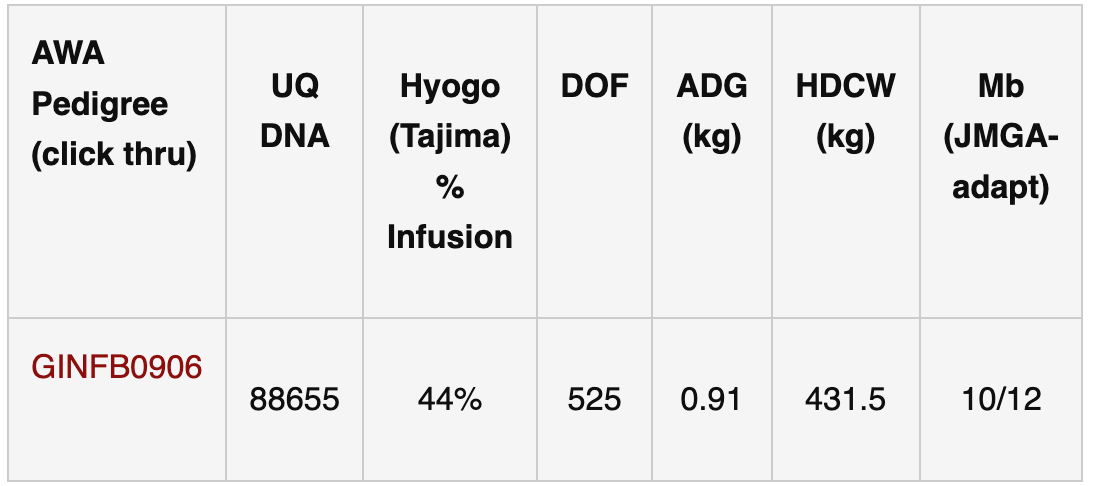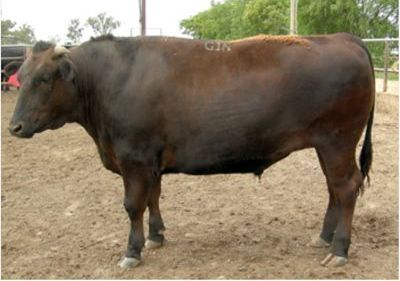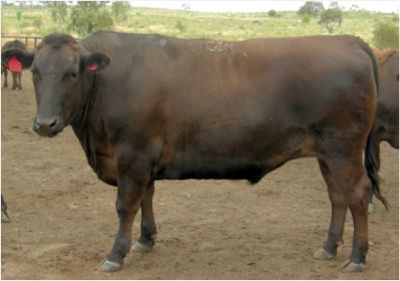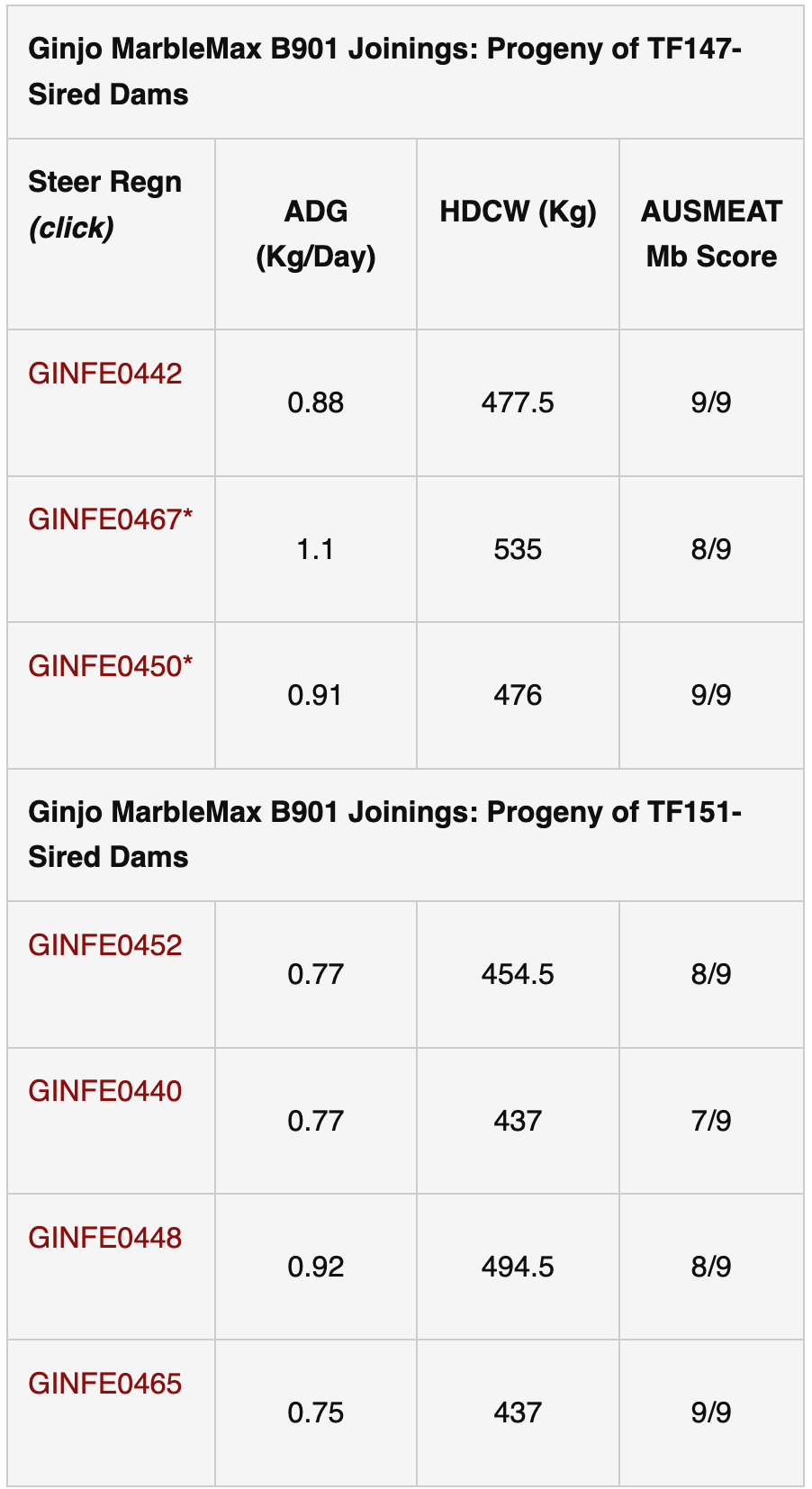Rare Tottori Bloodline AI Sires
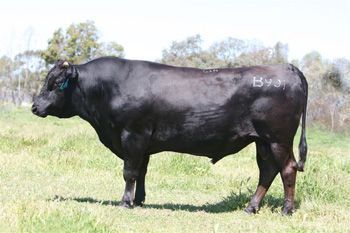
Ginjo MarbleMax™ Hiranami B901
Ginjo MarbleMax™ Hiranami B901 is perhaps the most versatile, high performance Japanese Black AI sire currently available in Australia. His progeny are proven in local feedlot conditions, primarily AACo Aronui, Dalby, Qld.
In Wagyu BREEDPLAN assessment, using higher accuracy (75% or more) values, his progeny are predicted to deliver higher performance for cow/calf operations targeting feeder production through strong early growth, then carrying on to culminate in similar performance in the feedlot processor environment, with well-marbled, large carcasses. Maternal traits (Milk and 200 day progeny weights) suggest equally strong performance as a sire of productive replacement heifers offering their own growth and marbling heritability...
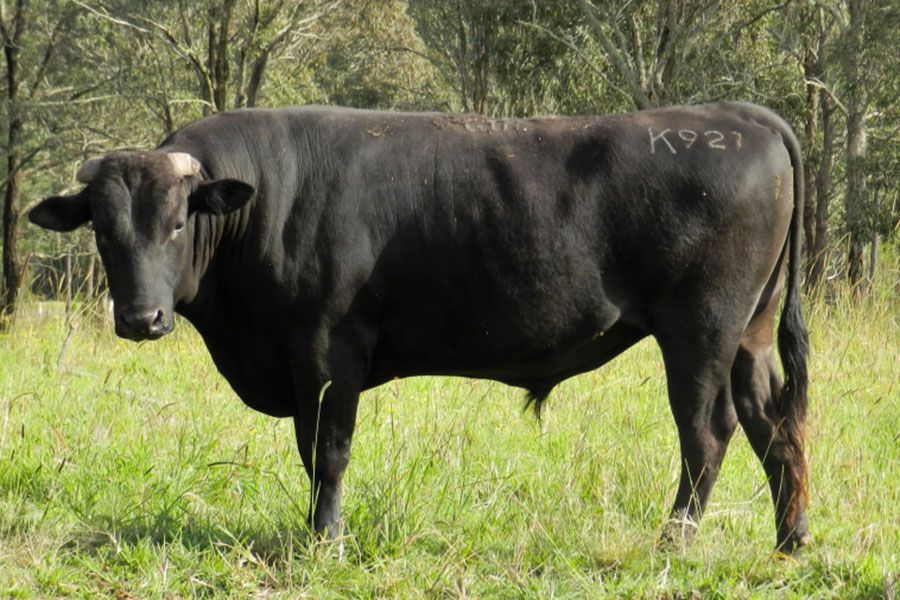
Ginjo Shigefuku K921
A well-pedigreed son of the sole 100% Tottori (aka ‘Kedaka’ in the West) sire to leave Japan, K921 featueres a dam pedigree packed with proven carcass performance and additional, potent Tottori/Kedaka infusion: Dam/dam C868,a Hirashigetayasu daughter, is a flush sister to our growth/marbling champion, Ginjo MarbleMax Hiranami B901.
Dam/sire Echigo Farms ECHFB1001, an Itomoritaka son, has been our second most consistent producer of high growth plus high marbling carcasses. K921 genetic composition is about 75% Tottori prefectural origin, including Dai 20 Hirashige and Kedaka. Both main Tottori streams are represented. All FB progeny will be rare and at least ~37% Tottori. This is a special package for breeders with an eye for rare breeding from famous bloodlines, prefectural origins and diversity. Licensed semen at $45 dose in Australia, Also available for USA, Canada, NZ and RSA...
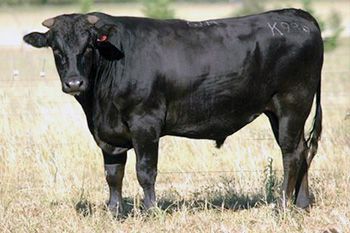
Ginjo Hatshira K930
Son of Kitahatsuhi 97/1, himself a proven but very rare ’97-drop, first ‘international’ generation Kitateruyasudoi son, K930 is set to maintain the 003 high performance tradition. But with a massive bonus in the foundation/heritage genetics of Kitahatsuhi dam, Hatsuhi, arguably the best of very few high Tottori females to come from Japan with Westholme, and a background ancestor of modern AACo stars such as Hiramichi Tsuru.
Ginjo MarbleMax B901 is dam/sire, and a massive TF148-infused, Itoshigefuji daughter is dam/dam. With balanced Hyogo (~43%), Tottori (~31%) and Itozakura bloodlines, K930 offers exciting potential to the serious breeder. Marbling, growth and rare bloodline diversity. Licensed semen at $45 dose in Australia, Also available for USA, Canada, NZ and RSA...
Ginjo Hiranami MarbleMax™ B901
Pedigree & EBVs – click AWA Regn: GINFB0901

Overview
Ginjo MarbleMax™ Hiranami B901 is perhaps the most versatile, high performance Japanese Black AI sire currently available in Australia. His progeny are proven in local feedlot conditions, primarily AACo Aronui, Dalby, Qld. In Wagyu BREEDPLAN assessment, using higher accuracy (75% or more) values, his progeny are predicted to deliver higher performance for cow/calf operations targeting feeder production through strong early growth, then carrying on to culminate in similar performance in the feedlot processor environment, with well-marbled, large carcasses. Maternal traits (Milk and 200 day progeny weights) suggest equally strong performance as a sire of productive replacement heifers offering their own growth and marbling heritability.
Historical Rankings Summary
Ginjo MarbleMax™ B901 was the outstanding Australian-bred performer in the New Age (Beyond BMS 9) carcass performance revealed at the 2012 Australian Wagyu Association annual conference, Gold Coast. In this instance, marbling was the sole assessment criteria. The local sire achieved #2 overall ranking for a single superfine marbling progeny carcass as assessed by digital imaging over the previous 12 months on major Australian fullblood processing lines. This was well ahead of his own sire, Hirashigetayasu, a holder of Hongen (supreme performance) status within the Japan Registry (ZENWA), prior to export. Hirashigetayasu is also the only international Japanese Black sire to have a known Japanese progeny test.
Superior B901 progeny performance was confirmed in succeeding year, within new Research EBVs tabled at the 2013 AWA Conference in Geelong, Conference (Dr Robert Banks, AGBU: ‘Genetics & Genomics for the Wagyu Breed in Australia – A springboard for growth and profit’). These draft EBVs enabled broader comparison than the single-focus 2012 marbling fineness ranking, including EBVs for carcass weight (CWT), Carcass AUS-MEAT Marble Score (CMAU), Carcass Camera Marbling % (CCMP), Carcass Camera Rib-eye Area (CCRA), and CCFI (Carcass Camera Marbling Fineness Index). Extracted below is the comparison of Ginjo B901 with his sire, the highly ranked Japanese-born Hirashigetayasu.. The three left-hand columns provide dataset record totals for progeny, carcass weight progeny and number of camera image progeny.
Extract From AWA Genomics Project 2013 – Initial EBVs
(Click for larger picture).
The AWA 2014 Research EBV Sire and Dam Summary listing again provided significant ranking to B901 for marbling, inexplicably based on AUS-MEAT MS 1-9 (CCMP being the better objective marbling measure) and CWT. Without disclosure or explanation, this 2014 ranking mixed fullblood, purebred and crossbred carcasses and included ‘progeny records’ from sires with neither ‘registered progeny’ nor specialist carcass assessment camera images supporting carcass rankings (in other words, low level producer carcass feedback level of detail only). Nonetheless, even without any resolution of the Summary parameters dilemma, comparison of 2014 Sire Summary listed sires by both Marbling and CWT ranking again put B901 into high contention as among the top economic performers, as is now more conclusively demonstrated by the November 2015 BREEDPLAN EBVs. The ‘mixed dataset’ described above continues to be applied in Wagyu BREEDPLAN and the FTI (Fullblood Terminal Index).
In actual progeny carcass results, B901 has demonstrated highly consistent marbling around AUSMEAT score 8-9, with HSCW (hot standard carcass weight) averaging over 440kg (~530kg) so far. Superior weaning weights and performance during early growout are features attractive to feeder producers. He represents an exceptional choice for efficient fullblood feeder production both feeder producers targeting weaner sales and for vertically integrated operators targeting superior gross returns. When joining smaller, high Tajima females for feeder production, superfine marbling is a proven deliverable, but high growth may be sacrificed. Results over larger Fujiyoshi/Itozakura joinings are outstanding, as results below illustrate. In the strong post-2012 F1 (cross-breeding) market, B901 is also an economic AI sire option for greater growth and profitability, with B901 sons approved as F1 sires with several Australian feeder/processor and F1 live export systems.
Retained B901 daughters have proven attractive breeding replacements for new generations of larger-frame females with improved maternal capabilities.
B901 is tested FREE of AWA-notifiable genetic defects. Licensed emen is available in Australia and for other international destinations including South Africa. Local stocks are available in the United States and New Zealand.
Images of Superfine Carcass Performance
The following images of the 2012 selected B901-sired carcass are from the Japanese (Kuchida) digital camera assessment (click for larger pictures):
Additional High Integrity Performance Data
All carcass data was supplied courtesy of AACo, Aronui Feedlot, Dalby. The following additional steps were taken to ensure the highest possible data integrity in assessing B901 feedlot performance.
- Full sibling benchmark. A full flush sibling was fed/finished to provide a consistency benchmark.
- DNA verification. All feeder siblings/progeny were University of Queensland parent-verified by DNA. This eliminates the substantial risk of mix-up in commercial registration NM multi-sire programs.
- AWA Registration. Feeder progeny were/are registered on the basis of DNA parent verification with the Australian Wagyu Association, which exceeds the AWA Commercial registration requirement (see performance tables for registration details).
- Independent feeding. All feeders were sold outright into Australia’s largest fullblood commercial feeding operation, and finished without preferential treatment of any kind.
- Independent grading. All carcasses were independently graded on a commercial production line, without any breeder involvement.
We are also indebted to AACo for the nutritional programs that enable a ‘pass’ for the sire in the ultimate ‘commercial reality check’. We are not aware of ANY superior data integrity/veracity regime available for fullblood feeder assessment in Australia.
Selection Process
The B901 progeny target was high pre-weaner growth with zero-supplementation; to set up maximum weaner profitability. This potential is recognised in his Wagyu Group BreedPlan 200 day weight EBV, which is in the upper ranks for the Australian national Wagyu herd.
For the purposes of benchmarking carcass performance for the specific sire pedigree, a full flush brother (Ginjo B906) was sold onto feed with the normal feeder autumn draft sent to AACo, Aronui. This full brother turned in an outstanding result as detailed below, despite a significantly shorter feed period than would be normal under Japanese conditions.
Selection Process
(Click for larger picture).
Note: Comparative marbling: JMGA No 3-4 approximates AUS-MEAT MS-9 or USDA Prime (Abundant). No 8 is national Japanese average. No 12 is top score.
The carcass ‘consistency score’ was further enhanced with a backcross joining outcome per the carcass summary below, with the sire over his dam.
Backcross Progeny Carcass
(Click for larger picture).
Bloodlines
After Hyogo (Tajima, about 44%), the secondary bloodline in B901/B906 is Tottori/Kedaka (25%), followed by Itozakura/Shimane. MarbleMax B901 then spent his debut 2008 season as a ‘clean-up’ sire in natural mating programs over fullblood females, before semen collection at the Holbrook AB centre in NSW. B901 steer progeny from these paddock joinings, over a random, genetically diverse breeder group, were sold outright into the same feedlot as the B906 sibling. In each case the secondary dam bloodline was Itozakura/Shimane, with smaller Tottori/Kedaka and Okayama infusions. Results are beneath photos.
Two B901 steers are pictured below
These details are for the first five feeders slaughtered. To see full AWA registration pedigrees for each feeder, click through registration numbers at left.
Data
(Click for larger picture).
*DOF = 630. Remainder 645 DOF.
As at April 2012, there was a total of 17 B901-sired fullblood steers, all 2009-drop. Average DOF is 640 (Five x 630; 12 x 645). All are progeny of random natural matings as backup to AI. A performance prediction based on this is presented below:
Carcass Summary From Initial 17 Fullblood Steer Progeny
(Click for larger picture).
The Ginjo MarbleMax B901 full flush sibling result at top remains superior to the strong B901 progeny results immediately above, especially given significantly shorter DOF, and this highlights the consistent superiority of the specific ‘immediate relationship’ genetics. Overall, results would be acceptable in Japanese production systems, where the top ADG rivals that of Dai 7 Itozakura progeny, although a higher average steer carcass weight would be sought for a Top 10 Japanese sire.
Ginjo MarbleMax B901 licensed semen is currently available Australia and South Africa, with limited stocks held locally in the United States and New Zealand.
Ginjo Shigefuku K921
Pedigree & EBVs – click AWA Regn: GINFK0921

Overview
A well-pedigreed son of the sole 100% Tottori (aka ‘Kedaka’ in the West) sire to leave Japan, K921 featueres a dam pedigree packed with proven carcass performance and additional, potent Tottori/Kedaka infusion: Dam/dam C868,a Hirashigetayasu daughter, is a flush sister to our growth/marbling champion, Ginjo MarbleMax Hiranami B901. Dam/sire Echigo Farms ECHFB1001, an Itomoritaka son, has been our second most consistent producer of high growth plus high marbling carcasses. K921 genetic composition is about 75% Tottori prefectural origin, including Dai 20 Hirashige and Kedaka. Both main Tottori streams are represented. All FB progeny will be rare and at least ~37% Tottori. This is a special package for breeders with an eye for rare breeding from famous bloodlines, prefectural origins and diversity. Licensed semen at $45 dose in Australia, with some overseas availability.
Ginjo Hatshira K930
Pedigree & EBVs – click AWA Regn: GINFK0930

Overview
Son of Kitahatsuhi 97/1, himself a proven but very rare ’97-drop, first ‘international’ generation Kitateruyasudoi son, K930 is set to maintain the 003 high performance tradition. But with a massive bonus in the foundation/heritage genetics of Kitahatsuhi dam, Hatsuhi, arguably the best of very few high Tottori females to come from Japan with Westholme, and a background ancestor of modern AACo stars such as Hiramichi Tsuru. Ginjo MarbleMax B901 is dam/sire, and a massive TF148-infused, Itoshigefuji daughter is dam/dam. With balanced Hyogo (~43%), Tottori (~31%) and Itozakura bloodlines, K930 offers exciting potential to the serious breeder. Marbling, growth and rare bloodline diversity. Licensed semen at $45 dose in Australia, with some overseas availability.
Let’s Talk About Your Wagyu Breeding Plan
We'll Find the Right Wagyu Breeding Solution for You
Call us:

